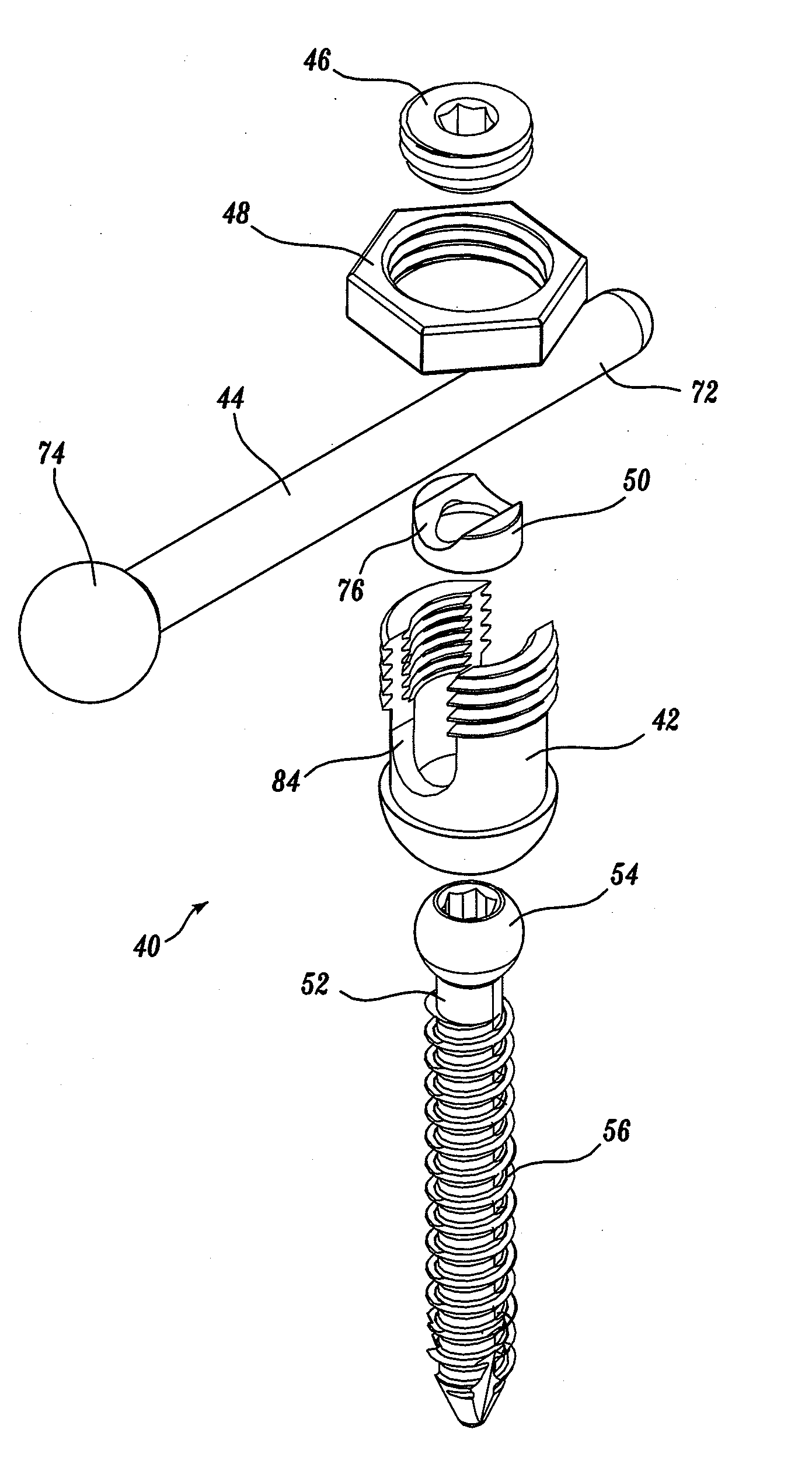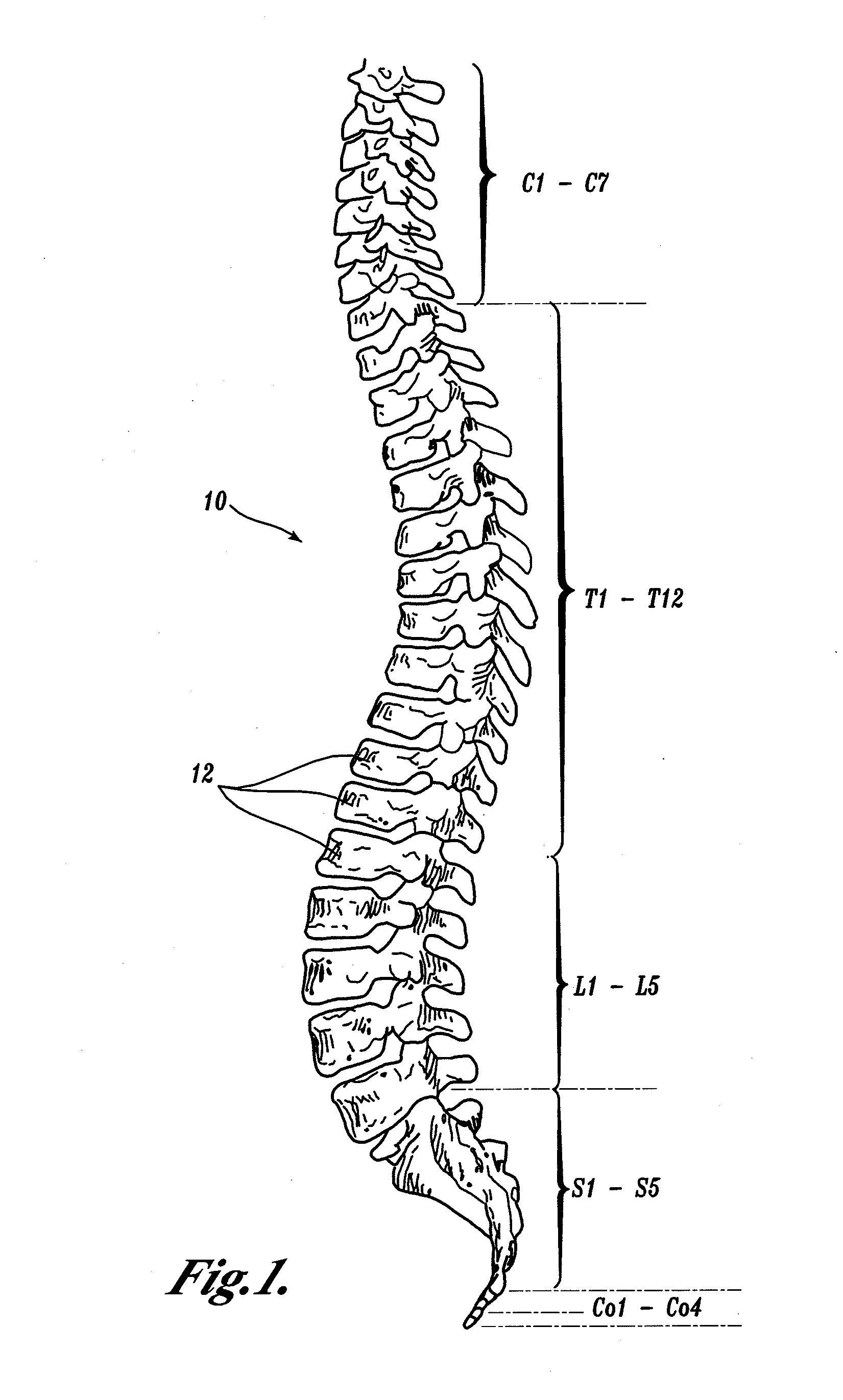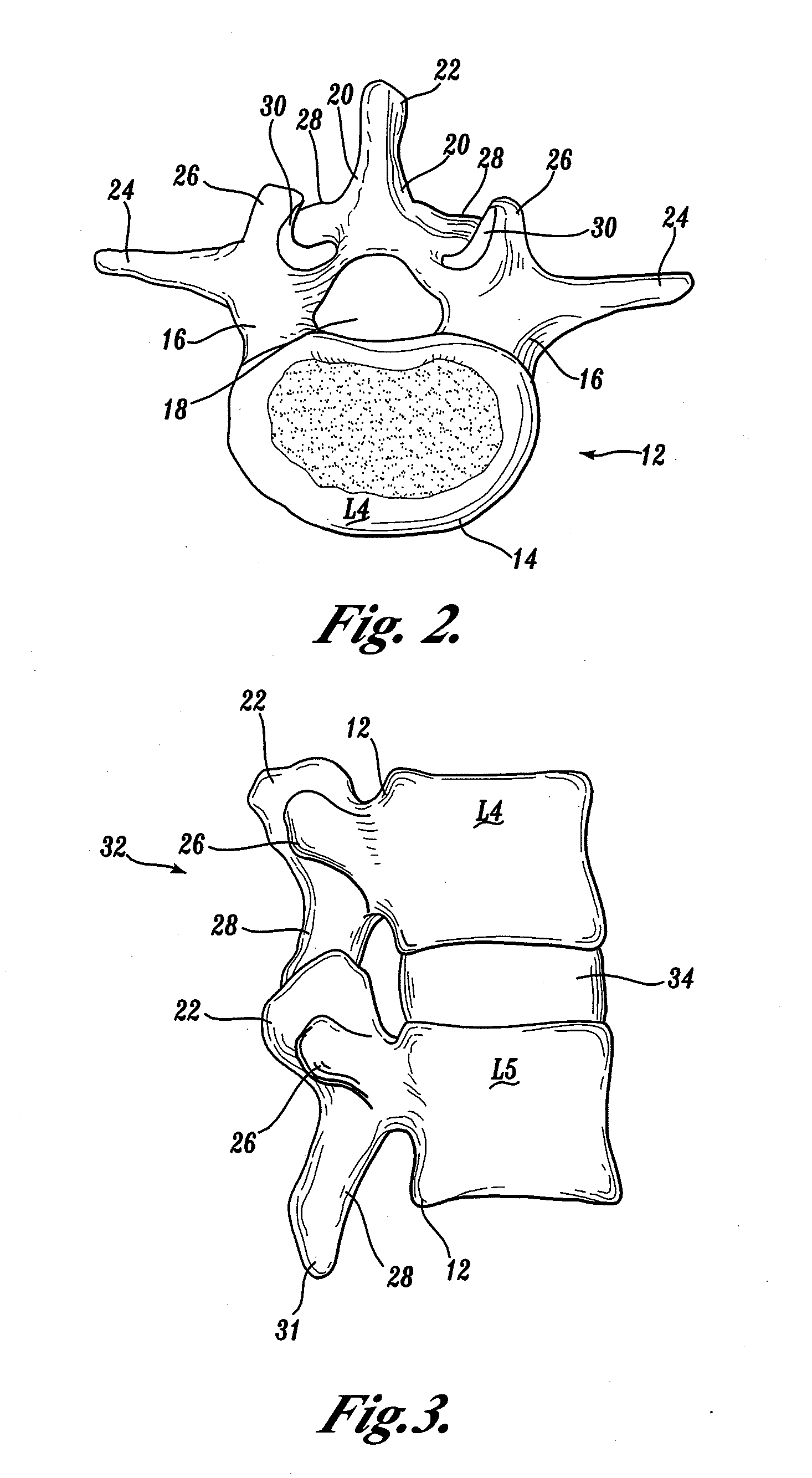Polyaxial adjustment of facet joint prostheses
a facet joint and prosthesis technology, applied in the field of polyaxial adjustment of facet joint prosthesis, can solve the problems of severe limitations on the functional ability and quality of life of people, damage to the spinous process, articular process, and the facets of one or more vertebrae that cannot be properly aligned with each other, so as to relieve the compression or impingement of the source nerve, and the effect of lessening or alleviating spinal pain
- Summary
- Abstract
- Description
- Claims
- Application Information
AI Technical Summary
Benefits of technology
Problems solved by technology
Method used
Image
Examples
Embodiment Construction
[0072]Although the disclosure presented herein provides details to enable those skilled in the art to practice various embodiments of the invention, the physical embodiments disclosed herein merely exemplify the invention which may be embodied in other specific structure. Accordingly, while preferred embodiments of the invention are described below, details of the preferred embodiments may be altered without departing from the invention. All embodiments that fall within the meaning and scope of the appended claims, and equivalents thereto, are intended to be embraced by the claims.
[0073]FIGS. 4-14 show one embodiment of an artificial cephalad facet joint prosthesis 40 configured to replace the inferior portion of a natural facet joint, such as after the surgical removal of the articulating process forming the inferior portion of the facet joint. When the cephalad prosthesis 40 is attached to a vertebra, the artificial facet joint structure 44 articulates with the superior half of th...
PUM
 Login to View More
Login to View More Abstract
Description
Claims
Application Information
 Login to View More
Login to View More - R&D
- Intellectual Property
- Life Sciences
- Materials
- Tech Scout
- Unparalleled Data Quality
- Higher Quality Content
- 60% Fewer Hallucinations
Browse by: Latest US Patents, China's latest patents, Technical Efficacy Thesaurus, Application Domain, Technology Topic, Popular Technical Reports.
© 2025 PatSnap. All rights reserved.Legal|Privacy policy|Modern Slavery Act Transparency Statement|Sitemap|About US| Contact US: help@patsnap.com



